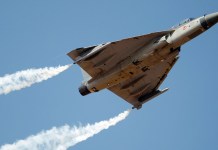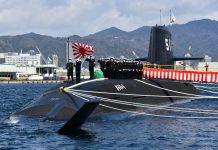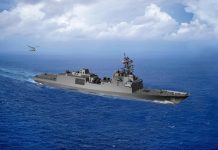By Air Marshal Anil Chopra (Retd)
The US Air Force (USAF) released the first official photos of the B-21 Raider stealth bomber in flight on 22nd May since it made its first flight last year. The B-21 manufacturer Northrop Grumman thereafter released more pictures of the bomber taking off, in the air, and in a hangar at Edwards Air Force Base.
The Northrop Grumman B-2 Spirit is the only other stealth bomber flying. China’s Xi’an H-20 stealth bomber is expected to fly in 2025. Russia’s Tupolev PAK DA will also be a stealth bomber, expected to be introduced around 2027. Effectively, these are the only heavy aircraft stealth programs.
As fighters and bombers stabilize their stealth and are capable of undetected cross-border or near-border incursions, crucial op-support aircraft such as airborne early warning and control (AEW&C), flight refueling aircraft (FRA), and other sensor-truck platforms must also be stealthy to penetrate deeper.
Cargo aircraft supplying front-line forces, especially those for airborne para drop and Special Forces incursion, must also be stealthy. Large aircraft with stealth has its challenges, but some have been circumvented during stealth bomber design. Interestingly, most stealth bombers have been subsonic.
How To Make Aircraft Stealthy?
Stealth is essentially a combination of many Low-Observable (LO) technologies, all of which combine to greatly reduce the distances at which an aircraft can be detected.
It involves reducing radar cross-section (RCS), acoustic signature, thermal imprint, and many other aspects. The term ‘Stealth’ became popular in the late 1980s when the F-117 stealth fighter was deployed in the Gulf War in 1991.
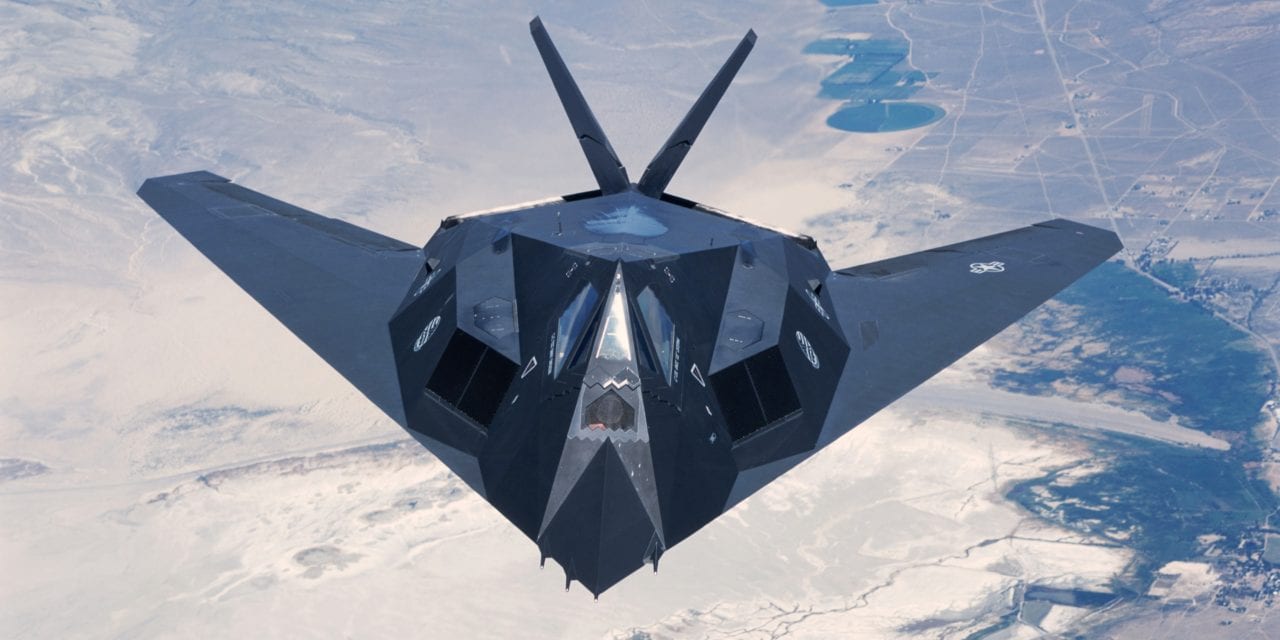
To reduce reflections, aircraft parts that contribute significantly to reflected radar echo, such as vertical stabilizers, are tilted or removed. When set at the same angle in the F-22 Raptor, the leading edges of the wing and tailplanes reduce reflections. All complex bumps or protrusions of any kind on the aircraft are removed. The weapons, fuel tanks, and other stores are placed internally.
The leading edges of the wing are coated with radar-absorbing materials (RAM) to trap the impinging waves. Initially, RAM paints resulted in a high weight and drag penalty, but they have improved over time.
Dielectric composite materials are more transparent to radar than metals and carbon fibers, reflecting electromagnetic energy incidents on the material’s surface. Coating the cockpit canopy and even the pilot’s helmet with a thin film of transparent conductors helps to reduce the radar reflections from the cockpit.
The aircraft engines were buried within the wing or fuselage so that the compressor blades were not visible to radar. This reduced the infrared (IR) signature. In some aircraft, the jet exhaust is vented above the wing surface to shield it from surface IR missiles.
Aircraft must avoid radiating any detectable energy, such as from onboard radars, communications systems, or RF leakage from electronics enclosures. So, passive infrared and low light TV sensors began to be used to track enemy aircraft and aim weapons. Forward-facing radar had to be used selectively.
More efficient, low-noise engines must reduce the acoustic signature. The visual signature is best reduced through camouflage paint or other materials that color and break up the lines of the aircraft. Aircraft must fly at altitudes that don’t leave contrails.
Operational Usage Of Stealth Till Date
The operational use of stealth began with the F-117 in Iraq in the 1990 Gulf War. Later, in 1999, the F-117 and the B-2 Spirit strategic bomber were used in Yugoslavia.
One F-117 was shot down by a Serbian S-125 ‘Neva-M’ missile. In the 2003 invasion of Iraq, F-117 Nighthawks and B-2 Spirits were used. The Sikorsky UH-60 Black Hawk helicopter used for the May 2011 operation to kill Osama bin Laden was heavily modified for quieter operations and employing stealth technology to be less visible to radar.
The F-22 made its combat debut over Syria in September 2014, and later, in 2018, Israeli F-35I stealth fighters conducted a number of missions in Syria and even ‘infiltrated’ Iranian airspace without detection.
All these have been in uncontested environments.
Stealth Limitations & Countermeasures
Aircraft shaping is of little help against low-frequency radars, which, even with signal wavelength more than twice the size of the aircraft, can still generate a significant return. Of course, such radars lack accuracy and, because of their large size, are difficult to transport. Multiple emitters are another option. Bi-static or multi-static radars have such separation.
IRST systems may be effective even against stealth aircraft because any aircraft surface heats up due to air friction, and a two-channel IRST can compare the difference between the low and high channels. Many modern fighters have IRST systems that can detect aerial targets at ranges up to 100 Km.
Creating a stealthy design often involves aerodynamic and other design compromises, long periods of perfecting the design, or high developmental financial costs.
The absence of an external pylon means larger internal bays, which means additional onboard real estate. Some stealth features require regular special maintenance. Specific aircraft shapes may also limit weapon and fuel carriage or may not be the best for flight efficiency. Also, counters to stealth are constantly evolving.
Operational Constraints
There are some vulnerable phases of flight, even for stealth aircraft. When internal armament bays open for weapon delivery, the plane’s RCS multiplies. While the aircraft will reacquire its stealth as soon as the bay doors are closed, a fast-response defensive weapons system still gets a short opportunity to engage the aircraft.
Also, some weapons require the weapon’s guidance system to acquire the target while the weapon is still attached to the aircraft. This forces relatively extended operations with the bay doors open.
Stealth aircraft carry all fuel and armament internally, which limits the payload, while a non-stealth attack aircraft can carry several times more. This would mean the need to deploy more aircraft, and for a similar payload, the stealthy aircraft has to be larger in size.
This apparent disadvantage, however, is offset by the reduction in the number of supporting aircraft required to provide air cover, air-defense suppression, and electronic countermeasures.
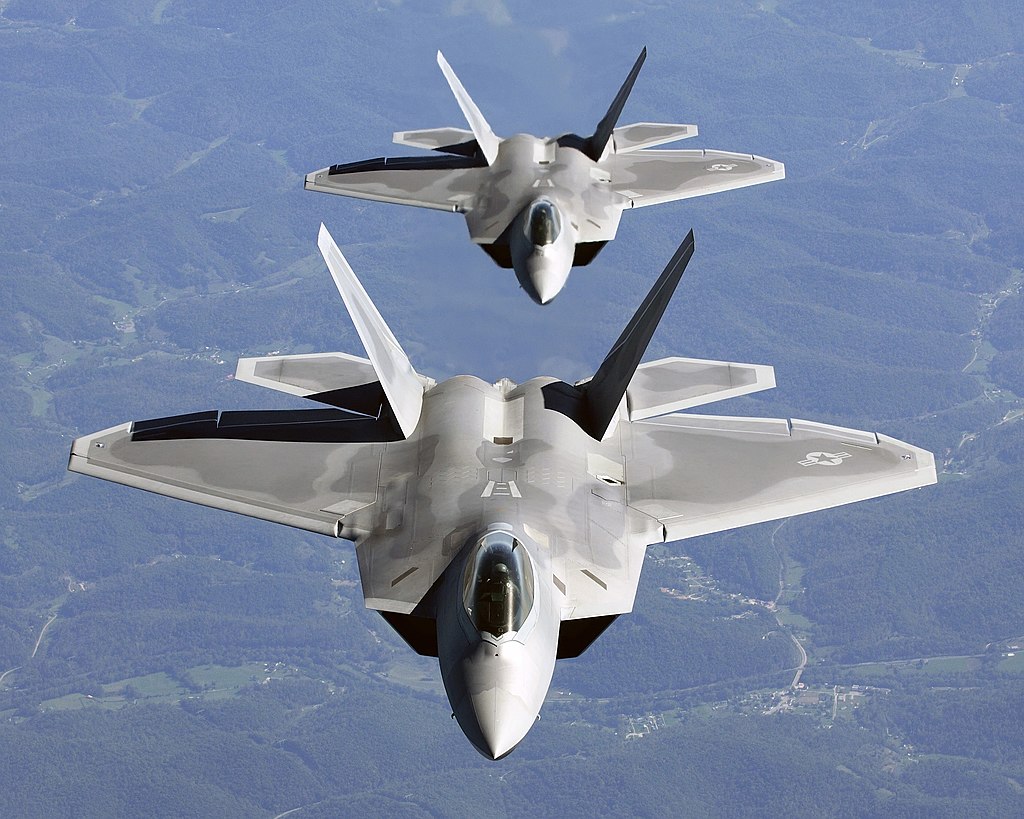
Flying Wing Concept
A flying wing is a tailless fixed-wing aircraft with no definite fuselage, and its cockpit, fuel, payload, and equipment are accommodated inside the main wing structure. In some cases, a flying wing may have vertical stabilizers.
A pure flying wing is theoretically the lowest-drag design configuration for a fixed-wing aircraft. However, because it lacks conventional stabilizing surfaces and the associated control surfaces, the flying wing remains unstable and requires an appropriately designed control system.
Because the flying-wing aircraft used the whole airplane to provide lifting force, it would allow heavier loads to be carried. The significant advantage is the enormous onboard real estate for fuel (range and endurance) and integral weapon bays.
Adopting a thick wing that accommodated the crew and equipment directly conflicted with the optimal thin wing for supersonic flight. No supersonic flying wing has ever been built. Remaining subsonic may be considered a drawback in the hypersonic age.
Most unmanned aircraft still fly subsonic, and many are of flying-wing design. These include the Lockheed Martin RQ-170 Sentinel, Northrop Grumman RQ-180, Chinese Hongdu GJ-11 Sharp Sword UCAV, Turkish Aerospace Industries’ (TAI) combat drone, Anka-3, and the Sukhoi S-70 Okhotnik-B stealth-heavy UCAV.
India tested the Autonomous Flying Wing Technology Demonstrator, a precursor to the autonomous stealth unmanned combat aerial vehicle (UCAV) ‘Ghatak’ developed by the DRDO.
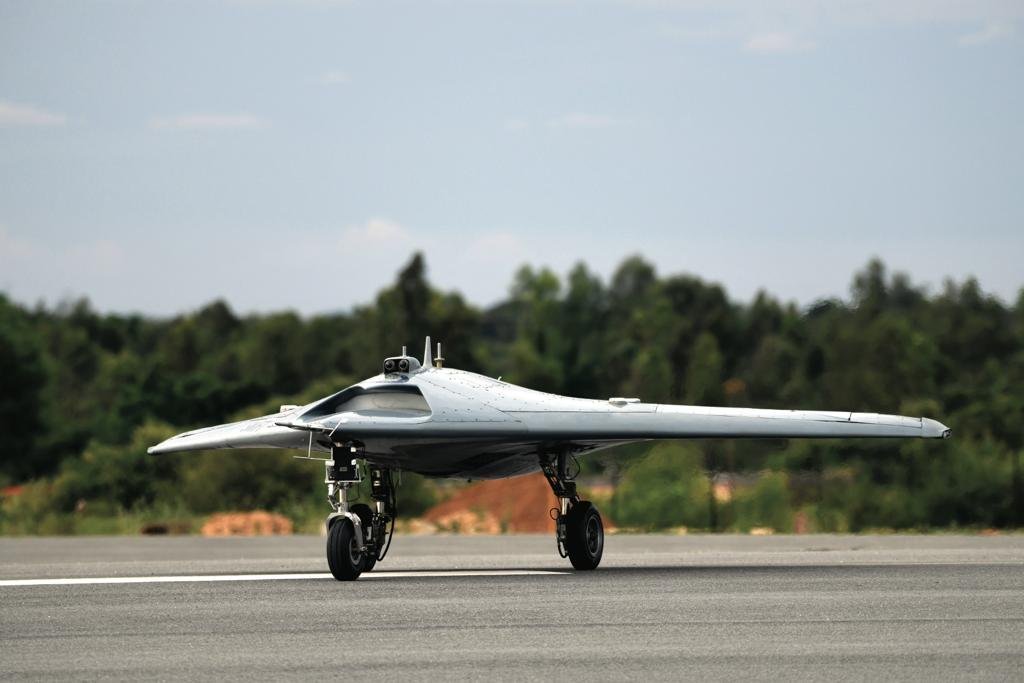
B-2 Spirit, The Only Stealth Bomber In Service
The Northrop B-2 Spirit was the first stealth strategic bomber. This subsonic aircraft with just two crew members was produced from 1987 to 2000. It is a large aircraft with a wingspan of 172 ft (B-52’s 185 ft) and a max take-off weight of 170,600 kg.
Its two internal ordnance bays can carry 18,000 kg. The aircraft’s unrefuelled range is more than 11,000 km, increasing to 19,000 km after one mid-air refueling.
Though the cost of the aircraft itself was $737 million, but with only 21 B-2s built, the average cost per aircraft program escalated to $2.13 billion.
The originally planned purchase of 132 bombers was reduced to 21 because of the end of the Cold War. Primarily designed as a nuclear bomber, the B-2 has been employed for conventional bombing operations in Kosovo (1999) and later in Iraq, Afghanistan, and Libya. It is still the only stealth bomber in service, and 19 are still flying.
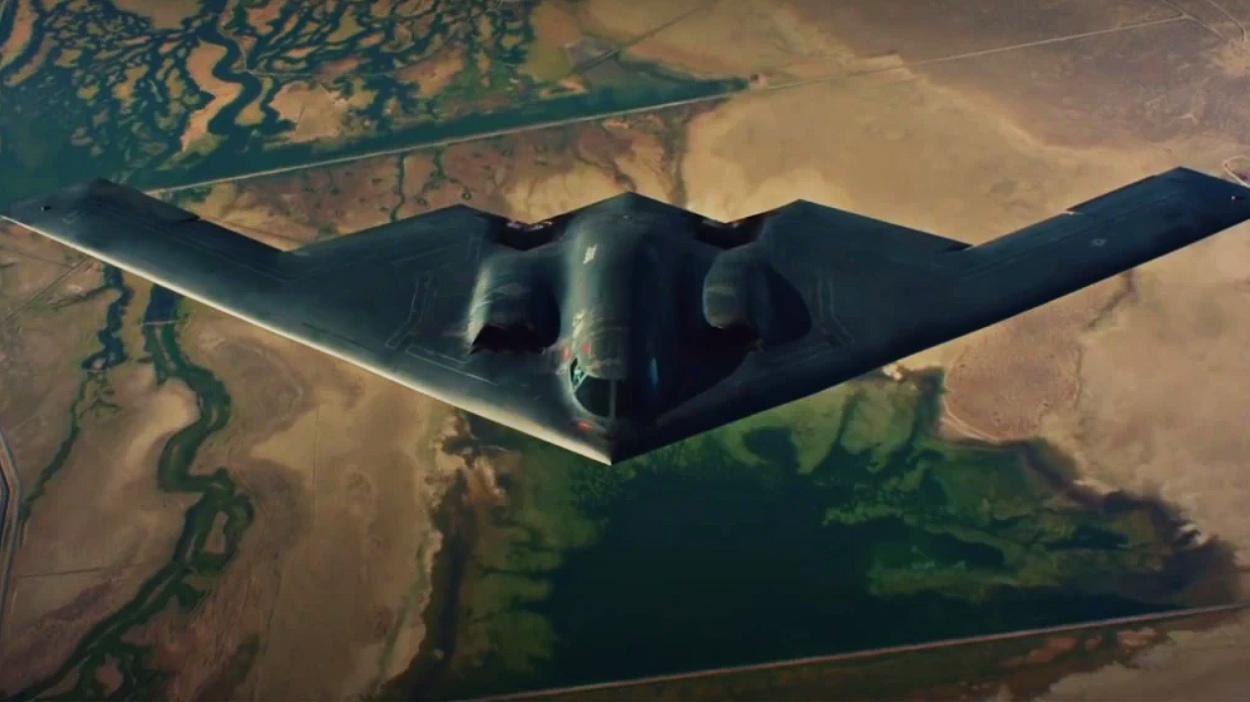
Other Stealth Bombers
Just one Northrop Grumman B-21 Raider has been built and it has just begun flight testing. It is smaller than the B-2.
With an estimated maximum take-off weight of 81,647 kg and a wing span of 132 ft. In December 2022, the cost of the B-21 was estimated at $700 million per aircraft.
The US Air Force (USAF) estimates that it would spend at least $203 billion over 30 years to develop, purchase, and operate a fleet of at least 100 B-21s. The details of the Chinese Xi’an H-20 bomber remain shrouded in mystery.
It appears to be a flying-wing design and a copy of the American stealth bombers. Similarly, little is known about the Russian Tupolev PAK DA stealth bomber, which is even further behind the H-20 in development.
Stealth FRA
FRAs give USAF unprecedented mobility, deployability, and striking range. The USAF has been seeking means to refuel stealth fighters F-35 and B-2/B-21 bombers closer to the aerial front line.
Non-stealthy FRAs are considered highly vulnerable, especially in a highly contested environment with a new generation of Russian and Chinese long-range, air-to-air missiles. Lockheed Martin’s Skunk Works division has revealed concepts of stealthy tankers in response to the USAF’s proposed KC-Z stealth tanker.
The proposed tankers will borrow concepts from existing stealth bombers, such as blended wing-body (BWB) or Hybrid blended-wing (HBW), air intakes molded into the sides of the aircraft, and canted vertical stabilizers. The aircraft, now known as the Next Generation Aerial Refuelling System (NGARS), is seen with a wide body and thick wings at the root to increase internal fuel carriage volume.
The FRA could have an onboard kinetic defense system to shoot down incoming air-to-air missiles, which could be in the form of air-to-air missiles (AAM) or directed energy weapons (DEW). They could also be escorted by unscrewed “Loyal Wingmen” with their own AD weapons.
The USAF has huge global reach requirements. It has nearly 450 FRAs, but they are aging and, as is, require replacements. Some of them will first be replaced by militarized variants of wide-body conventional passenger jets. The KC-Z, NGARS is slated to enter service by 2040.
Meanwhile, the Boeing MQ-25 Stingray is a stealth air refueling drone currently being developed.
Stealth AEW&C
Large airliner-sized AEW&C aircraft can be detected by radars from long distances. Their transmissions are also a giveaway. The rotating or fixed “rotodome” has its own signature.
The very long-range “AWACS-Killer” missiles are a threat, so keep them away. Smaller aircraft like Indian DRDO’s Netra have a shoulder-mounted beam radiating planar active antenna array unit (AU), which has a lesser signature but provides only around 240° coverage like Erieye. Later variants will have an antenna in the nose in addition to the main dorsal antenna to give 300-degree radar coverage.
The Boeing E-7 Wedgetail is another design to replace the radome. These cover a full 360 degrees with additional front and rear-looking antennas. IAI Condor AEW&C has AESA arrays on the fuselage on both sides. China’s Divine Eagle drone has a variant with long fuselage-based side-looking radar antennas.
AWACS’s primary mission requires beaming megawatts of radar power all over the battlefield. It is thus impossible to make stealthy while in operation. Yes, the transmissions can be powered on selectively for short periods to coincide with operations.
Ultimately, a stealthy AEW&C will have to be a modified flying wing with antennae arrays on the wing leading edges like the L-band array on the Su-57. Similarly, a trailing antenna will have to be evolved.
Stealth Cargo & Special Operations Aircraft
A wing deep enough to contain the pilot, troops, engines, fuel, undercarriage, and other necessary equipment will have an increased frontal area compared with a conventional wing and long-thin fuselage.
Boeing has been studying possible applications for civilian and military transports. Boeing and NASA have been developing a flying-wing passenger airplane that can carry 800 passengers per flight (160 more than a 747).
The new “flying wing,” design does away with the cigar-shaped fuselage and tail section featured since the 1930s. The new sleek platform resembles a boomerang. The double-deck cabin would be divided into five bays per deck. Most passengers won’t have a window, so the aircraft will have video screens that display window views. Each bay will have doors at the front and back to make emergency exits easier.
The emergency evacuation systems will require redesign with adequately closed exit doors. Several challenges remain before a production aircraft can be made. The much larger cabin would require a freshly designed pressurization system.
The current airliners fly around 950 kmph. Achieving the same in a much thicker flying wing would mean higher drag, higher engine power, and, consequentially, higher fuel consumption.
The flying wing has the potential to be more than just a commercial passenger jet or troop carrier. It could also be used as a cargo aircraft and a long-range military airlifter.
USAF is seeking a successor to the C-17 Globemaster III cargo aircraft, which has been out of production since 2015. USAF has sought a large-transport flying demonstrator ready by 2026. This could be critical to supporting forward hub-and-spoke logistics and refueling operations in a higher-end conflict, as well as penetrating missions.
As of now, the flying wing, with lifting aerofoil fuselage, is a possible contender for stealth transport applications. The revolutionary bi-directional flying wing is also evolving. The first scaled model of KLM Royal Dutch Airlines’ futuristic Flying-V aircraft designed by Delft University of Technology flew in 2020.
Both Airbus and Boeing are working on flying-wing airliners. Boeing has unveiled a BWB-scaled model of its ‘Revolutionary’ Stealthy Tactical Cargo Aircraft Concept, which is designed around a payload capacity roughly equivalent to that of a C-130 Hercules, the aircraft it is meant to replace.
The concept was displayed at the American Institute of Aeronautics and Astronautics (AIAA) SciTech in January 2023. It is claimed to have at least 30% more aerodynamic efficiency than the Boeing 767 and Airbus A330 families of commercial and military aircraft, thus increased range, loiter time, and offload capabilities.
Stealth Sensor Trucks
Other than AEW&C, there are many other forms of airborne sensor platforms, such as electronic intelligence, Electronic attack, nuclear and biological sensors, communication relays, and magnetic anomaly detectors (MAD). For the present, these roles can best be assigned to unscrewed stealthy platforms like Boeing MQ-25 Stingray variants.
Future Stealth Initiatives
With the invention of metasurfaces, means of reducing RCS have been significantly improved. Thin two-dimensional metamaterial layers allow or inhibit the propagation of electromagnetic waves in desired directions.
Plasma stealth is proposed to use ionized gas (plasma) to reduce RCS. Interactions between electromagnetic radiation and ionized gas might create a layer or cloud of plasma around the platform to deflect or absorb radar.
The concept of flexible or adaptive aero-elastic wings and fluidic controls using air jets could replace control surfaces. All these are still evolving and costly.
It’s Wait, Watch & Learn For India
India currently has no bomber. It also does not have a stealth aircraft. India has no dedicated electronic attack aircraft. India is woefully short of both AEW&C and FRA, which it is trying to develop quickly.
Stealth bombers, large stealth military cargo, and FRA are surely the future, but it is a high-end luxury for India at present. It must first master basic stealth in AMCA. It must get the AEW&C and FRA numbers up. It must get the required fighter squadrons. So it is “Wait, Watch, and Learn” time for India.
- Air Marshal Anil Chopra (Retired) is an Indian Air Force veteran fighter test pilot and is the former Director-General of the Center for Air Power Studies in New Delhi. He has been decorated with gallantry and distinguished service medals while serving in the IAF for 40 years. He tweets @Chopsyturvey
- Follow EurAsian Times on Google News

